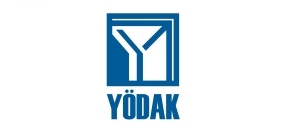This Advanced Professional Certificate Course in Agile Project Management provides a comprehensive overview of Agile methods, covering principles, values, and methodologies such as Scrum, Kanban, and Lean. Participants will learn to identify the benefits and drawbacks of Agile, understand the Agile Manifesto, and delve into Agile project management roles and best practices. The course also explores the implementation of Agile within organizations, addressing cultural considerations, strategies for introducing Agile, and scaling Agile across the entire organization. Additionally, it covers Scrum roles, events, artefacts, and insights into Agile Project Management with Kanban, offering practical knowledge and strategies for real-world application.
This course delves into Agile Project Management fundamentals, covering principles, methodologies (Scrum, Kanban), and roles. It explores Agile implementation, addressing challenges and emphasizing organizational culture and structure. Additionally, the course extends into scaling Agile across the organization, covering frameworks, governance, and fostering continuous improvement. The Scrum module details roles, events, and artefacts, while the Kanban module focuses on its framework, work visualization, and continuous improvement strategies. The course equips participants with comprehensive Agile skills for effective project management.
After the successful completion of this course, you will understand the following;
Fundamentals of Agile Methods in Project Management.
- Understand the principles and values of Agile and how they differ from traditional project management methodologies.
- Identify the benefits and drawbacks of using Agile methods in project management.
- Understand the Agile Manifesto and its 12 principles.
- Learn about different Agile methodologies and frameworks, such as Scrum, Kanban, and Lean.
- Understand the importance of iterative and incremental development in Agile projects.
- Learn about Agile project management roles and responsibilities, including the Scrum Master and Product Owner.
- Identify best practices for Agile project management, such as creating user stories and conducting retrospectives.
- Understand the importance of communication and collaboration in Agile project management.
- Identify the benefits and drawbacks of using traditional project management methodologies, such as Waterfall.
- Understand how Agile can address common challenges in traditional project management, such as scope creep and project delays.
- Learn about hybrid project management approaches that combine traditional and Agile methods.
- Understand how to select the appropriate project management methodology for a given project, based on factors such as project scope and organizational culture.
- Identify the importance of project planning and risk management in both traditional and Agile project management methodologies.
Implementing Agile within the Organization.
- Understand the importance of organizational culture and structure in Agile implementation.
- Identify strategies for introducing Agile methods to an organization, including pilot projects and executive sponsorship.
- Learn how to create an Agile implementation plan and identify success metrics.
- Understand how to train and coach team members in Agile practices.
- Identify common challenges in Agile implementation and strategies for addressing them.
- Understand how to measure and communicate the benefits of Agile to stakeholders.
- “Expanding Agile across the Organization“.
- Understand how to scale Agile beyond individual teams to the entire organization.
- Identify different scaling frameworks, such as SAFe and LeSS.
- Learn how to manage dependencies and align work across multiple teams.
- Understand how to implement Agile governance and manage risks at the organizational level.
- Learn how to create a culture of continuous improvement and innovation in the organization.
- Identify common challenges in scaling Agile and strategies for addressing them.
Scrum Roles, Events and Artefacts.
- Understand the Scrum framework and its key components, including sprints, product backlog, and daily standup meetings.
- Learn how to create and prioritize user stories and plan sprints.
- Understand the role of the Scrum Master in facilitating the Scrum process and removing obstacles.
- Understand the role of the Product Owner in managing the product backlog and ensuring stakeholder needs are met.
- Learn how to conduct effective sprint planning, sprint reviews, and retrospectives.
- Identify common challenges in implementing Scrum and strategies for addressing them.
- Understand how Scrum can be used in different types of projects, such as software development and marketing campaigns.
- Agile Project Management with Kanban”:
- Understand the Kanban framework and how it differs from Scrum.
- Learn how to visualize and manage work using a Kanban board.
- Identify different types of work items and how to prioritize them using Kanban.
- Understand the importance of limiting work in progress and how to implement pull-based workflow.
- Learn how to manage flow and identify bottlenecks using Kanban metrics.
- Understand how to continuously improve the Kanban process through regular review and adaptation.
- Identify common challenges in implementing Kanban and strategies for addressing them.
- Understand how Kanban can be used in different types of projects, such as software development and service delivery.



























